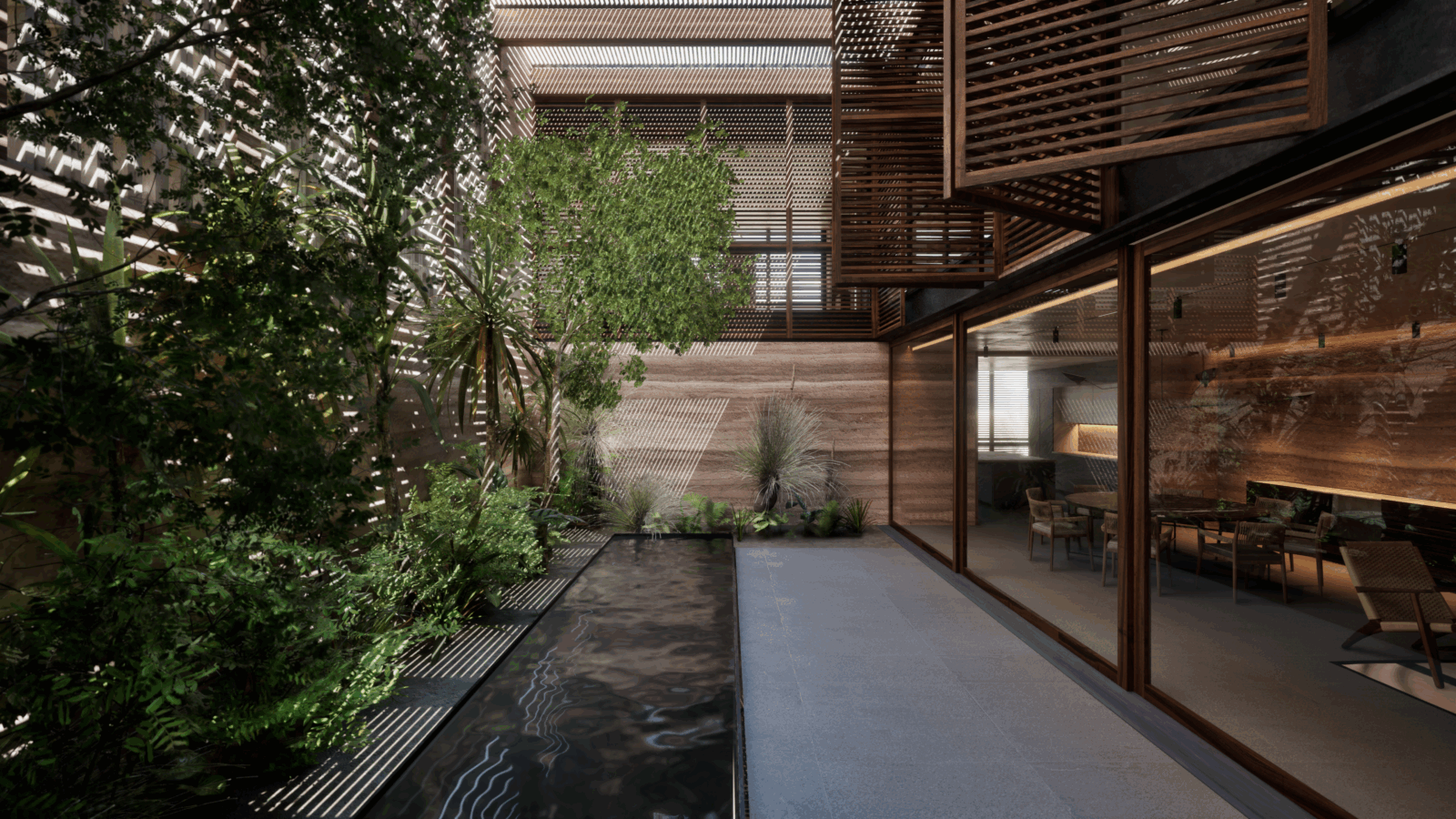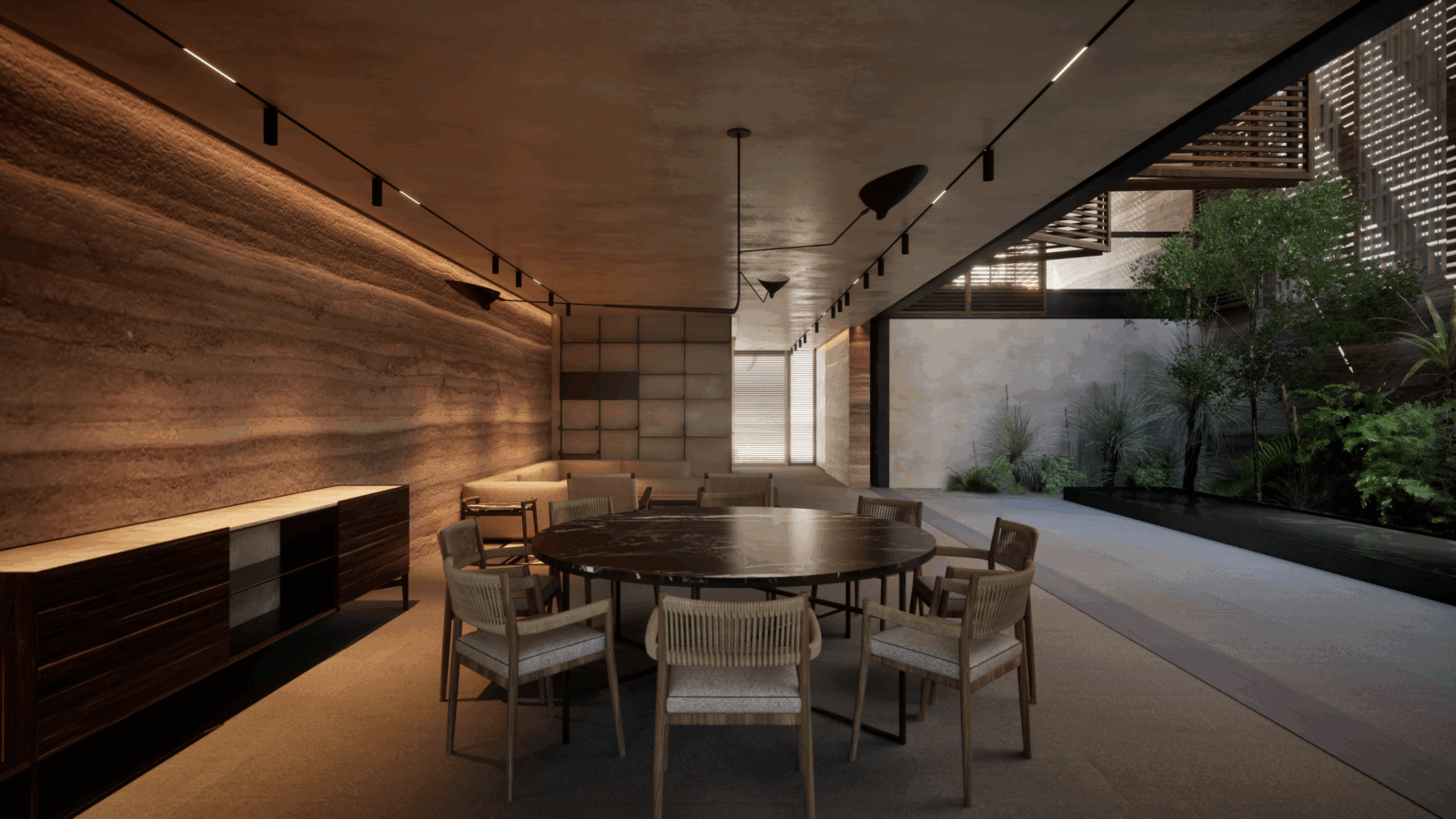













Terra House – UEA
Project Description: Terra House
Assignment
The competition called for the design of a private residence suited to the climate and cultural context of the UAE. The program required specific dimensional limitations, accommodation needs, home staff utilities, parking, and cultural requirements but allowed creative freedom within the dimensional envelope. Our challenge was to create a sophisticated and high-performing home that embodies elegance while offering respite from the extreme desert environment.
Objectives
Our primary goal was to design a residence that passively responds to the intense heat and dryness of the region while maintaining architectural distinction and comfortable livability. We aimed to balance privacy and openness, use traditional regional principles in a modern way, and integrate nature within the home itself. Above all, we sought to produce a sensory and environmental experience that would feel timeless, restorative, and serene.
Design Concept
Terra House is rooted in the idea of inhabiting the earth rather than sitting atop it. The design carves space into the ground to escape the sun and leverages the mass of earth and water to regulate temperature. Inspired by ancient desert architecture and reimagined through a modern lens, the home centers around a lush courtyard — an inward-looking oasis that serves as the project’s emotional and environmental heart. The home’s organization is radial, with all primary spaces touching the courtyard, blurring boundaries between interior and nature.
Approach and Strategy
To combat the desert climate, we adopted a strategy of passive cooling through thermal mass, subterranean rooms, cross-ventilation, and integrated vegetation. Air is pulled from cooler lower spaces and distributed upward through vertical voids. A deep reflecting pool not only modulates microclimates but also allows refracted light to dance into the lower-level entertainment and media areas. A system of retractable louvers provides responsive solar control. Our approach synthesized regional environmental tactics with modern spatial fluidity and technological precision.
Key Features
•A vast interior courtyard that every major room opens onto, filled with plantings and a central pool
•Subterranean volumes that act as thermal batteries and contain informal gathering spaces
•A reflective pool that doubles as an aquarium, contributing light, movement, and temperature control
•Retractable louvers and movable glass walls for sun modulation and seamless indoor-outdoor living
•Vertical air chimneys drawing cool air from below and expelling heat above
•Sculptural rammed earth walls and shaded exterior corridors
Materials and Techniques
The home uses locally-sourced rammed earth, polished concrete, natural wood, and glass. The courtyard walls are built with thick, insulating earth layers. Water elements were engineered for evaporative cooling. Retractable aluminum louvers were precision fabricated for solar response. The below-grade rooms required waterproofing systems adapted to arid soils while allowing for vertical light entry via glass-bottomed pools.
Challenges
Designing below grade in a desert climate posed challenges of waterproofing, daylight access, and ventilation. Integrating water responsibly — given its preciousness in the region — required engineering finesse and thoughtful balance. We also navigated strict dimensional constraints and programmatic complexity while still achieving spatial elegance.
Results
The result is a home that quietly adapts to its environment, celebrates the intimacy of private oasis living, and represents a future-forward reinterpretation of regional architecture. Terra House offers immersive tranquility and a refined relationship to earth, water, and sky — a luxurious retreat that breathes, shields, and inspires.



